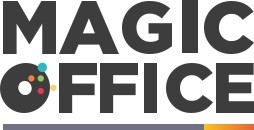Understanding the Procure-to-Pay and Order-to-Cash Cycles
Key Stages in the Procure-to-Pay Cycle
The procure-to-pay (P2P) process is integral for effective business management, encompassing all activities from procurement of goods and services to the final payment. This cycle kicks off with identifying the need for specific products or services, followed by selecting a suitable supplier and negotiating purchase orders. Upon receipt of goods or services, businesses must ensure prompt invoice approval before processing payments to suppliers. Maintaining timely cash flow by optimizing the pay processes is crucial in this cycle.Order-to-Cash Cycle Overview
The order-to-cash (O2C) process is vital for managing customer relationships, focusing on activities from customer orders to cash collection. This involves order management, where businesses handle customer requests, fulfill orders, and ensure delivery. Once orders are completed, generating invoices is essential for accurate financial reporting. This cycle concludes with managing accounts receivable to ensure efficient cash collection and happy customers.Understanding Financial Impact
Both P2P and O2C processes influence the financial stability of a business. These cycles are critical for maintaining a streamlined cash process, as cash procure strategies affect the overall financial health. Effective management ensures seamless procure pay and order cash operations, enhancing business efficiency.Ensuring Efficient Data Management
The success of both cycles hinges upon accurate data management. Utilising trustworthy software tools aids in record report generation, providing insights for better decision making. Automation of processes, like invoice management and order fulfillment, facilitates process optimization and enhances customer satisfaction. Companies aiming for best practices should continuously seek improvements in these domains.Technological Advancements and Their Impact
Advancements in technology have transformed how businesses approach these cycles. Automation and digital tools have streamlined processes, reducing time and touchpoints in both pay processes and order management. Companies investing in innovative solutions gain a competitive advantage by ensuring efficient operations. For more insights on improving office efficiency, you might want to explore strategies for optimising HVAC solutions in the UK by visiting Optimising HVAC Solutions.Challenges Faced by UK Companies
Unique Economic Environment and Business Dynamics
The UK's distinct economic environment presents specific challenges in the procure-to-pay and order-to-cash processes. These processes involve multiple steps, where effective order management and efficient financial transactions are pivotal.
Regulatory Compliance and Financial Reporting
UK companies are often burdened with stringent regulatory compliance and the need for accurate financial reporting. Managing the procure and cash processes requires meticulous attention to detail, ensuring data accuracy for accounts payable and accounts receivable.
Vendor and Supplier Practices
Sourcing goods services can be challenging due to varying supplier payment terms and currency fluctuations. This complicates the procure pay and cash flow management. Streamlining invoice administration and payment schedules is crucial to maintain a steady order cash cycle.
Adapting to Technological Advancements
Integrating advanced procurement and order management software has become essential. Automation aids in minimizing errors and expediting processes. However, companies face the challenge of choosing the right technology suited to their unique needs.
Customer Satisfaction and Service Delivery
Customer satisfaction hinges on efficient order fulfillment and timely goods delivery. Aligning customer orders with business objectives, while ensuring optimal order process management, is a constant challenge for UK businesses.
Resource and Time Management
The need for effective resource allocation impacts pay processes and financial decision making. Time constraints add pressure on process management, requiring businesses to adopt best practices for workplace efficiency.
Adverse Market Conditions
Market volatility affects the cash procure and procurement strategies, necessitating robust risk management protocols. Adopting scalable processes helps companies navigate economic uncertainties while maintaining cash flow stability.
For a comprehensive understanding of the UK's financial management landscape, an in-depth look at the Debt Management Office can provide insightful context.
Strategies for Process Optimization
Streamlining Operations in Order and Payment Processes
To optimize the procure-to-pay and order-to-cash cycles, UK companies need to focus on improving the efficiency of their processes. This involves taking proactive steps in order management, procurement, and cash flow management. Here are several strategies that can pave the way to enhanced business operations:- Implement Automation: Streamlining procure and order-related tasks significantly relies on automation. By employing advanced software solutions, businesses can reduce manual intervention in invoicing and financial reporting. Automation helps in efficient record keeping and timely execution of accounts payable and accounts receivable functions, ensuring smooth cash processes.
- Data-Driven Decision Making: Leveraging data for process management allows companies to make informed decisions. The integration of financial and supplier data assists in accurate demand forecasting and enables a more structured approach to procurement and sales processes.
- Enhance Supplier Relationships: Forging strong ties with suppliers can improve procurement processes and lead to better payment terms, enhancing cash flow. Regular communication and understanding shared goals can lead to mutual benefits in terms of timeline and cost management.
- Focus on Customer Satisfaction: Ensuring customer orders are fulfilled accurately and on time boosts customer satisfaction. By fine-tuning order fulfillment and implementing best practices in order cash processes, businesses can improve the overall customer experience and foster loyalty.
- Training and Development: Empowering your team with the right training can elevate the quality of the pay processes and improve overall management of procure and cash operations. Continuous learning opportunities keep your team updated with the latest technologies and best practices.
The Role of Technology in Process Enhancement
Leveraging Technology for Streamlined Business Operations
In today's competitive business landscape, implementing technology in procure and cash processes is critical. Technology can significantly enhance the efficiency of order and pay cycles, directly impacting cash flow and customer satisfaction. Here's how technology plays a pivotal role in process enhancement:- Automation in Procurement and Payment: Utilizing software for procurement can speed up the order cash cycle, reducing the time it takes to manage order fulfillment and supplier interactions. Automation of accounts payable through invoice processing systems ensures timely payments and improved relationships with suppliers.
- Data Management and Financial Reporting: Robust order management systems facilitate accurate record reports by integrating data across the procure cash continuum. This enhances decision making in financial strategies while rendering crystal-clear reports to management teams.
- Customer Order Processing: Implementing advanced order and cash software dramatically streamlines the handling of customer orders. By automating sales processes, companies can improve customer satisfaction and reduce errors in the payment and delivery phases of goods services.
Case Studies from UK Companies
Successful Implementation Insights
To grasp how UK companies optimize their procure-to-pay and order-to-cash processes, several practical examples shed light on effective management. These instances highlight real-world applications and improvements within crucial financial and procurement frameworks.
Improved Efficiency through Standardized Processes
Companies that standardized their procurement processes saw significant enhancements in their efficiency. Introducing best practices such as streamlined supplier management and consolidated invoicing reduced processing time and minimized errors in financial reporting. By adhering to a defined structure, the recording and reporting of accounts payable became more accurate, promoting better decision-making that aligned with strategic sales objectives.
Leveraging Automation for Enhanced Productivity
Incorporating automation in order processing and cash management allows businesses to handle larger volumes of data seamlessly. Automation tools facilitate the transition from manual to electronic procurement, thus shortening the cycle from order fulfillment to cash procurement. This automation directly impacts customer satisfaction by ensuring faster order management and improved payment processes, creating a reliable cash flow system.
Emphasis on Supplier Collaboration
Establishing strong, collaborative relationships with suppliers can drive down costs and improve service delivery for businesses. By collaborating closely, companies can secure favorable payment terms and optimize payment processes. This interaction not only enhances the procure pay dynamics but also ensures an uninterrupted supply chain, contributing to optimum process efficiency and better customer orders fulfillment.
Utilizing Technology for Data-Driven Decisions
Utilization of advanced accounting software and financial management tools provides crucial insights for businesses. These tools support comprehensive data analysis which informs strategic financial decisions, fostering improvement in pay processes and order cash cycles. As more companies adopt digital solutions, they experience improved financial oversight and capability to forecast cash process needs accurately.
Case Study: Streamlined Procurement at Large Retail Chains
One of the UK's prominent retail chains effectively standardized its procurement procedures by adopting a digitally integrated system. This allowed seamless transition from procurement to payment, reducing order discrepancies and enhancing transparency across all processes. Additionally, the retail chain observed a notable increase in process speed and accuracy in managing their cash processes.
These practical insights underscore how adeptly navigating the complex terrain of procure-to-pay and order-to-cash processes can lead to significant business improvements in efficiency, customer retention, and cash process management.













